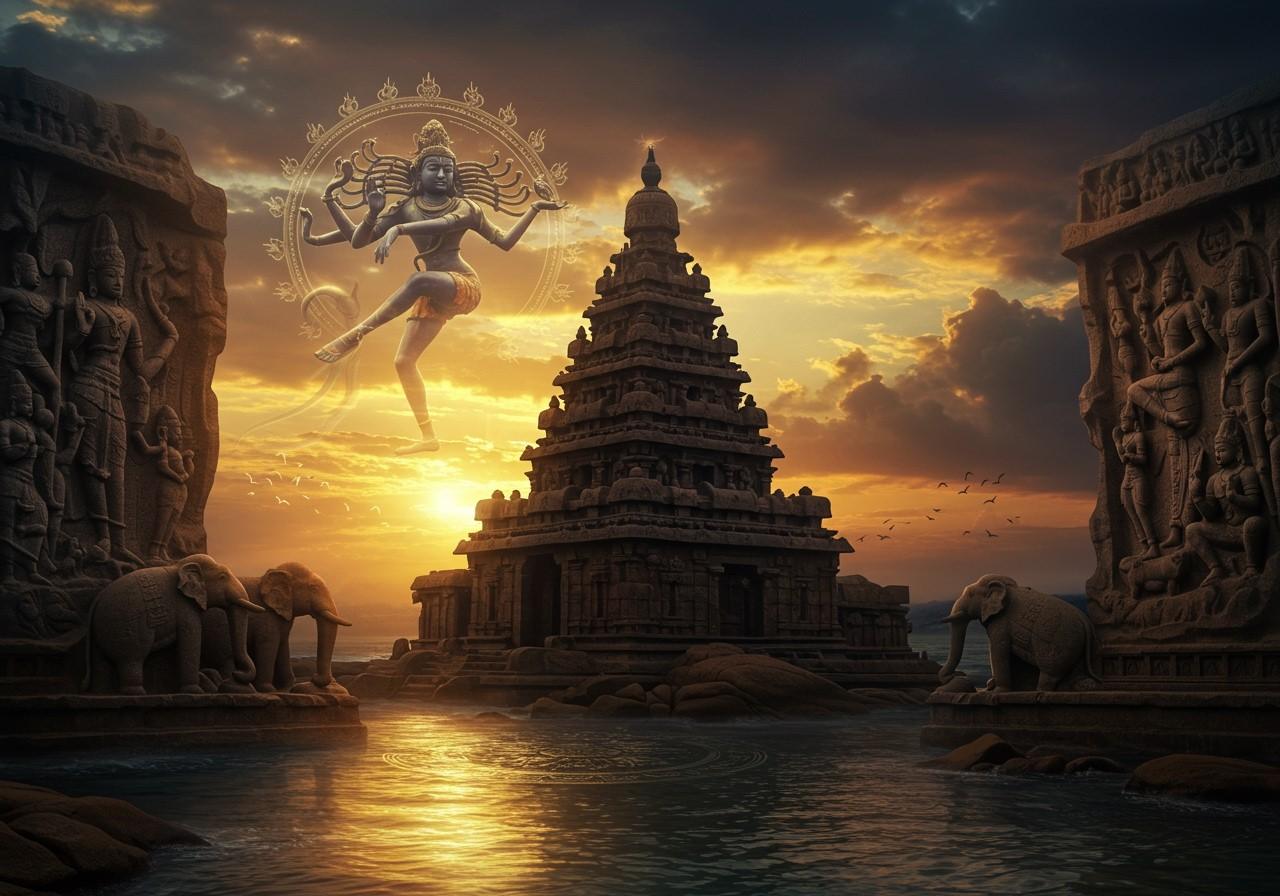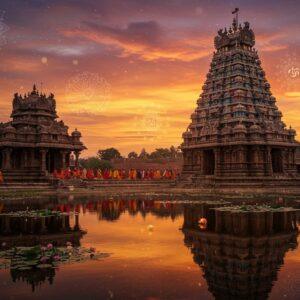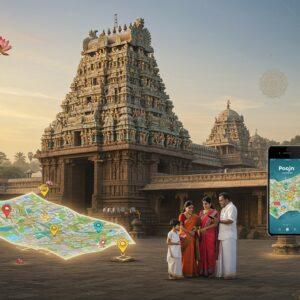
Mahabalipuram, also known as Mamallapuram, is a historic city in Tamil Nadu, India, renowned for its ancient temples and rock-cut monuments. These structures, carved out of rock along the Coromandel Coast during the reign of the Pallava dynasty in the 7th and 8th centuries CE, stand as a testament to India’s rich spiritual and architectural heritage. The site, a UNESCO World Heritage site, encompasses 40 ancient monuments and Hindu temples, and continues to be celebrated through various cultural festivals.
Deities Worshipped in Mahabalipuram
The temples of Mahabalipuram honor a pantheon of Hindu deities, reflecting the religious practices of the Pallava dynasty.
- Lord Shiva: Several temples are dedicated to Lord Shiva, most notably the Shore Temple, an architectural marvel situated by the sea. This temple complex is a prime example of Dravidian architecture, featuring intricate carvings and a prominent location overlooking the Bay of Bengal.
- Lord Vishnu: The Varaha Cave Temple showcases Vishnu in his Varaha avatar (boar incarnation), a remarkable display of Pallava sculptural skill. The temple’s detailed carvings depict the mythological story of Varaha rescuing the Earth goddess from the cosmic ocean.
- Goddess Durga: The Mahishasuramardini Cave depicts Durga’s triumph over the buffalo demon Mahishasura. This powerful imagery symbolizes the victory of good over evil and showcases the goddess’s strength and divine power.
- Lord Krishna: The Krishna Mandapam illustrates scenes from the Mahabharata, particularly those involving Lord Krishna. The mandapam’s carvings offer a glimpse into the epic’s narratives and the cultural significance of Lord Krishna.
- Panch Rathas: These five monolithic temples, dedicated to the Pandavas and Draupadi, exemplify diverse architectural styles and depict various deities. Each ratha is carved from a single rock and represents a distinct chariot, showcasing the architectural prowess of the Pallavas.
- Lord Ganesha: Smaller shrines throughout Mahabalipuram feature Lord Ganesha, the remover of obstacles. These shrines highlight the widespread reverence for Lord Ganesha in Hindu tradition.
- Arjuna’s Penance: This massive bas-relief portrays a mythological narrative featuring gods, celestial beings, and animals. Arjuna’s Penance is a remarkable example of Pallava artistry and storytelling carved into rock.
The Pallava Dynasty and Mahabalipuram
Mahabalipuram’s temples owe their existence to the patronage of the Pallava dynasty, which flourished during the 7th and 8th centuries CE.
- The Pallava Dynasty (c. 3rd – 9th century CE): This influential dynasty significantly shaped South Indian architecture, art, and culture. Their reign saw the construction of numerous temples and the development of a distinct architectural style.
- Narasimhavarman I (Mamalla, r. 630-668 CE): This king is credited with establishing Mahabalipuram as a major port city and cultural center, giving the town its alternative name, Mamallapuram. His reign marked a period of significant architectural and artistic activity.
- Narasimhavarman II (Rajasimha, r. 695-722 CE): He continued the architectural legacy, further embellishing Mahabalipuram with grand structures like the Shore Temple. His contributions solidified Mahabalipuram’s status as a prominent religious and cultural site.
Exploring the Architectural Marvels
Mahabalipuram is celebrated for its unique and varied temple architecture.
- Shore Temple: This iconic temple, a UNESCO World Heritage Site, is known for its intricate carvings, seaside location, and Dravidian architectural style. It stands as a testament to the architectural prowess of the Pallava dynasty.
- Five Rathas (Pancha Rathas): These monolithic rock-cut temples, each dedicated to a different deity, showcase diverse architectural styles and intricate stone carvings. They represent a unique experiment in temple architecture and are a must-see for visitors.
- Arjuna’s Penance: This massive bas-relief, one of the largest in the world, depicts a scene from the Mahabharata. The intricate carvings showcase a multitude of figures, animals, and deities, narrating a complex mythological story.
Poojn.in: Your Source for Puja Needs
Enhance your spiritual journey with authentic puja items from Poojn.in, India’s leading online store for cultural and religious goods. We offer a wide selection of high-quality products, including:
- Lord Shiva Murtis: Beautifully crafted murtis of Lord Shiva in various sizes and materials, perfect for your home altar or temple.
- Shiva Lingams: Sacred Shiva Lingams in different materials, ideal for daily worship and special occasions.
- Bel Malas: Authentic Bel Malas for offering to Lord Shiva during prayers and rituals.
Visit Poojn.in today to explore our complete collection and find everything you need for your puja needs.
Conclusion
Mahabalipuram’s timeless beauty and spiritual significance continue to captivate visitors. Its rock-cut temples and intricate sculptures stand as a testament to the Pallava dynasty’s artistic and religious devotion. A journey through Mahabalipuram is a journey through India’s rich cultural heritage.


